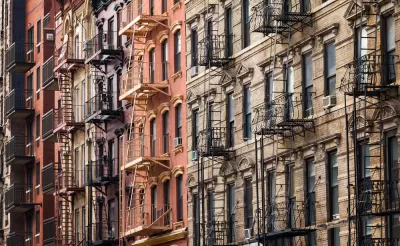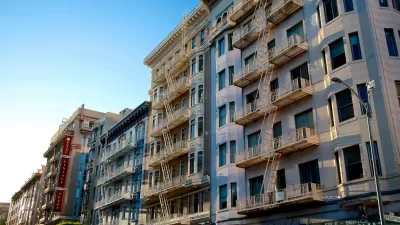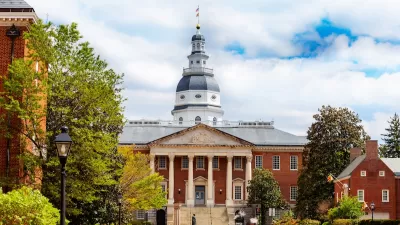Even as the city pursues new affordable housing, lax enforcement of rental regulations is leading to rising costs and evictions.

Like other big cities facing affordable housing crises, New York is steadily losing its supply of rent-stabilized units to deregulation. And, Daniel Geiger writes for Crain's New York, systemic fraud may play a substantial role in that decline.
Recent audits by the city and class-action lawsuits against major landlords reveal a pattern of dubious renovation expenses that enable property owners to raise prices on rent-stabilized apartments, Geiger reports. Over the past 26 years, around 167,000 rent-stabilized units—that officials know of—have been deregulated, fraudulently or not, through programs that allow for rent increases. "That's roughly 50,000 units more than Mayor Bill de Blasio's signature affordable-housing initiative aims to create over 12 years," Geiger notes.
In New York, laws permitting landlords to cover major repair costs by raising rents above regulated levels were enacted in the 1970s to encourage property maintenance. But most cities don't have systematic or proactive enforcement, relying on tenant complaints and lawsuits to bring violations to light. As a result, fraud is rampant: “Loopholes and lax oversight practically invite owners to pull units out of regulation," Geiger writes. Or as one attorney put it: "You have to be nuts not to be breaking the law, because the chances of getting caught are so slim."
FULL STORY: Landlords are exploiting a key loophole to raise rents on thousands of apartments

Study: Maui’s Plan to Convert Vacation Rentals to Long-Term Housing Could Cause Nearly $1 Billion Economic Loss
The plan would reduce visitor accommodation by 25% resulting in 1,900 jobs lost.

Alabama: Trump Terminates Settlements for Black Communities Harmed By Raw Sewage
Trump deemed the landmark civil rights agreement “illegal DEI and environmental justice policy.”

Why Should We Subsidize Public Transportation?
Many public transit agencies face financial stress due to rising costs, declining fare revenue, and declining subsidies. Transit advocates must provide a strong business case for increasing public transit funding.

Paris Bike Boom Leads to Steep Drop in Air Pollution
The French city’s air quality has improved dramatically in the past 20 years, coinciding with a growth in cycling.

Why Housing Costs More to Build in California Than in Texas
Hard costs like labor and materials combined with ‘soft’ costs such as permitting make building in the San Francisco Bay Area almost three times as costly as in Texas cities.

San Diego County Sees a Rise in Urban Coyotes
San Diego County experiences a rise in urban coyotes, as sightings become prevalent throughout its urban neighbourhoods and surrounding areas.
Urban Design for Planners 1: Software Tools
This six-course series explores essential urban design concepts using open source software and equips planners with the tools they need to participate fully in the urban design process.
Planning for Universal Design
Learn the tools for implementing Universal Design in planning regulations.
Smith Gee Studio
Alamo Area Metropolitan Planning Organization
City of Santa Clarita
Institute for Housing and Urban Development Studies (IHS)
City of Grandview
Harvard GSD Executive Education
Toledo-Lucas County Plan Commissions
Salt Lake City
NYU Wagner Graduate School of Public Service





























